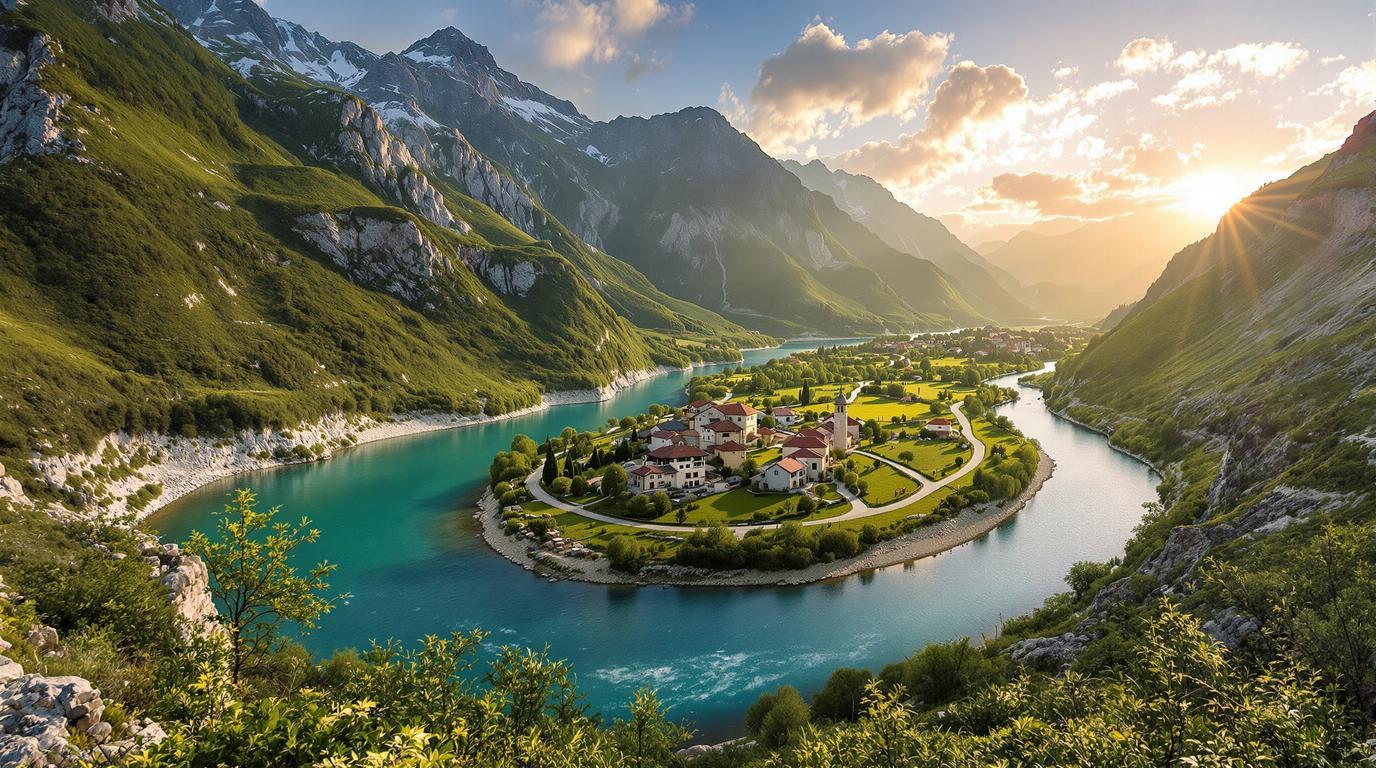The global travel industry stands at a crossroads. After decades of pursuing visitor numbers at any cost, a revolution is quietly taking place across three unlikely pioneers: Albania, Spain, and Japan. These nations are rewriting the rulebook on tourism, proving that economic growth doesn’t have to come at the expense of natural beauty, cultural authenticity, or community wellbeing.
Albania’s untamed wilderness becomes its greatest asset
Albania, long overlooked by mainstream tourism, has transformed this former disadvantage into its greatest strength. With over 21% of its territory designated as protected areas, the country embraces its wild side while ensuring locals benefit from tourism dollars.
“We don’t want to repeat the mistakes of overcrowded destinations,” explains Elton Caushi, founder of Albanian Trip. “Our approach integrates conservation with community-driven experiences, creating a tourism model that preserves rather than consumes.”
The recently established Vjosa Wild River National Park exemplifies this philosophy. As Europe’s first wild river national park, it offers visitors pristine landscapes while supporting local economies through ecotourism initiatives rather than environmentally destructive developments.
Spain tackles overtourism with bold restrictions
Spain, facing the opposite challenge of overwhelming visitor numbers, has implemented decisive measures to protect both residents and resources. Cities like Barcelona are pioneering regulatory frameworks that shift focus from quantity to quality tourism.
From tourist taxes to limits on short-term rentals, Spain demonstrates how mature destinations can pivot toward sustainability. This transformation didn’t happen overnight – it required political courage and community engagement.
The country that once championed mass coastal resorts now leads conversations about responsible travel alternatives, showcasing how economic prosperity can align with environmental stewardship.
Japan’s regional redistribution strategy
Japan faced a pre-pandemic crisis of overtourism concentrated in cultural hotspots like Kyoto. Rather than simply capping visitors, Japan implemented a sophisticated strategy to redistribute tourism benefits nationwide.
The country promotes lesser-known destinations through targeted campaigns, while developing sustainable infrastructure beyond major cities. This approach mirrors the success of emerging adventure tourism destinations that carefully manage visitor numbers from their inception.
“We’re focusing on quality cultural exchanges rather than tourist volumes,” notes Yoshinori Ochi, director of Japan’s Sustainable Tourism Office. “This creates deeper connections between visitors and communities while reducing environmental pressure.”
The economic argument for sustainable tourism
Critics once dismissed sustainable tourism as economically unviable, but these three countries demonstrate otherwise. By attracting higher-spending visitors seeking authentic experiences, they generate more revenue with fewer environmental impacts.
Albania has experienced remarkable growth in tourist arrivals while maintaining ecological integrity. Spain finds that quality-focused tourism creates more stable employment than seasonal mass tourism. Japan proves that regional distribution of tourism dollars strengthens national economic resilience.
Preservation of natural wonders
From Albania’s stunning coastal ecosystems to Spain’s threatened Mediterranean landscapes and Japan’s ancient forests, natural preservation stands at the core of these sustainability efforts.
Conservation isn’t just environmentally sound—it’s economically essential. As travelers increasingly seek pristine experiences, destinations that maintain their natural integrity gain competitive advantage.
Cultural authenticity as a cornerstone
All three countries prioritize cultural preservation alongside environmental protection. From Albania’s Ottoman-era villages to Spain’s traditions and Japan’s centuries-old crafts, authentic cultural experiences attract discerning travelers willing to pay premium prices for genuine encounters.
This approach mirrors successful cultural preservation models seen in destinations like Switzerland’s heritage cities, where authenticity becomes a marketable asset.
Technology enabling sustainable choices
Innovative technologies support these sustainability efforts. Spain deploys visitor management systems to prevent overcrowding at popular sites. Japan utilizes data analytics to optimize tourism flows. Albania develops digital platforms connecting travelers directly with local service providers.
These technological solutions, similar to those used in Bavaria’s pioneering environmental management, demonstrate how modern tools can support age-old conservation goals.
The traveler’s role in sustainable tourism
As these countries transform their tourism models, travelers bear responsibility too. By choosing locally-owned accommodations, respecting cultural norms, and visiting during shoulder seasons, tourists become partners in sustainability rather than mere consumers.
The pioneers of Albania, Spain, and Japan show us that tourism’s future lies not in extracting experiences at any cost, but in creating shared value between visitors, communities, and environments. Their success proves that responsible travel isn’t just the right choice—it’s the only viable path forward.
